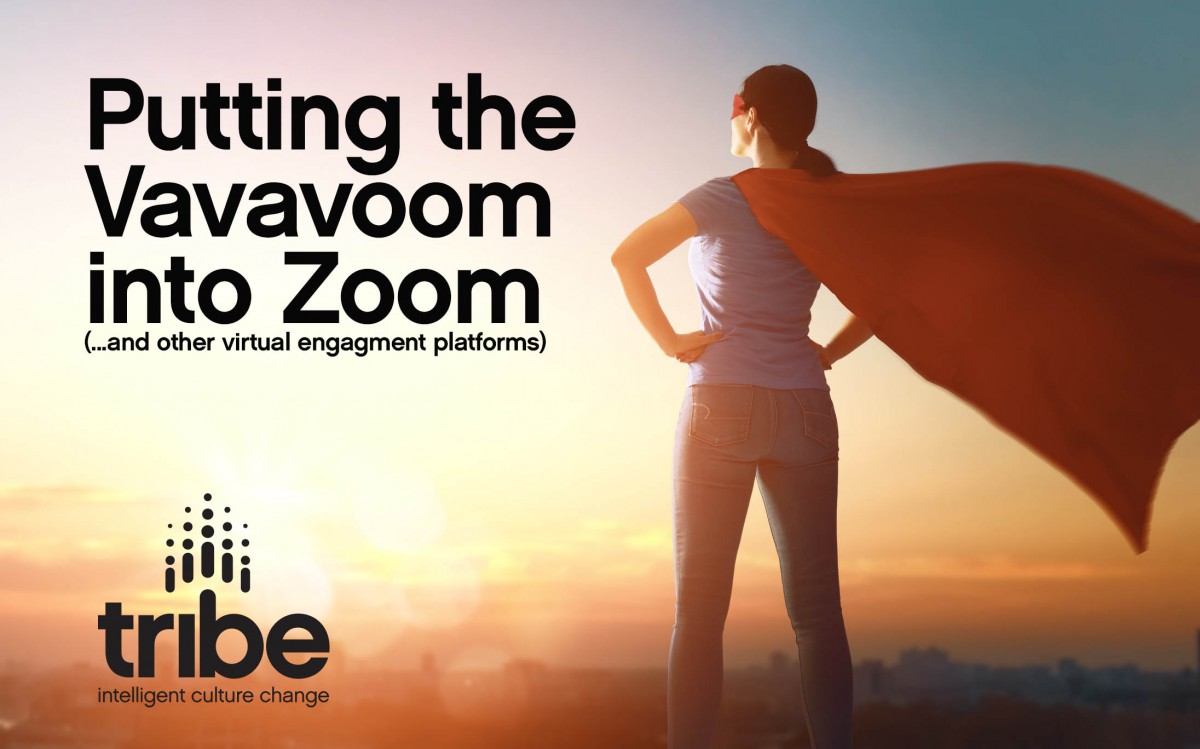
Part 1: Putting the Vavavoom into Zoom… and other virtual engagement platforms.
Engaging in a meaningful way with your employee teams is more important now than ever before, especially when the topic is about keeping yourself and colleagues safe and well.
To many of us, video calls have become a lifeline for workplace engagement. Even while working from home or in socially distanced workplaces we can keep our teams connected and provide much needed eye contact for one to one interactions.
There are many benefits of course. We can fit more meetings into our day and there’s no time wasted in travel. But more meetings don’t necessarily mean increased productivity, because one meeting can merge into the next and it’s too easy to get distracted. So how can you make sure that your virtual session really makes an impact and engages & motivates people… especially when the topic is critical to the safety and wellbeing of your team.
Rethinking engagement
Businesses are now prioritising the safety and wellbeing of their people more than ever before. This means re-energising their employee engagement plans and culture programmes.
Clare Solomon, Founder and Creative Director of Tribe Culture Change, explains more:
“At Tribe we’ve been completely re-thinking the way we approach the development, design and delivery of our culture change workshops and training.
“In almost every case, our clients are asking for a virtual learning experience for their teams. It makes sense from a COVID point of view and is an excellent way to join up disparate teams who rarely got into the same room before COVID. That’s all with the added bonus of huge savings on expenses normally associated with venue hire and travel.
“However, with everyone getting tired of ‘Zooming’ you really have to think about how you can still make an impact and keep people’s attention when you’re just a head and shoulders on a screen.
“A session that was designed for face-to-face delivery will almost certainly not land as well on a virtual platform and, as a rule, people’s concentration starts to wain after ten minutes. It’s not such a problem when the facilitator is in the room. They’ll manage this easily by using white boards, asking questions, reading the room and changing the tone. But when talking to a computer screen full of faces, it’s a lot tougher.
“Delegates get distracted. Emails arrive, half-finished reports sit on desktops, cats walk across screens and deliveries get delivered. For an online session you have to work much harder to keep delegates involved.”
Storytelling
David Mansell, is a Creative Consultant at Tribe with a background as a TV scriptwriter and director. He says, “Storytelling is an important way to drive engagement. TV show writers will tell you that in any 45 minute episode, there will be five ‘interest tent-poles’ designed to keep people hooked.
“Every 10 minutes there is a build up to a mini climax so viewers don’t switch off when you go to an advert break and to make sure people tune in for the next episode. It’s what’s known as the Eastenders ‘duff duff’ moment.”
Improving your online engagement
When designing an engaging online workshop for our clients, we draw on our experience in the art and science of culture change and engagement. The first thing we think about is the learning journey we are taking people on.
What do we want people to do, say, feel at the end of the session that they couldn’t do at the start? Keeping that in mind, we break down the session into micro-learning moments. For us it is about keeping the pendulum swinging between art and science. Let’s discover, learn, engage.
If this has sparked your imagination, next week in part 2, we’ll be sharing our top five tips to better virtual engagement. Keep an eye out for the next Tribe Vibe. Let’s call this our own personal ‘duff duff’ moment…
Get involved
Register for the next in our series of Virtual Forum masterclasses where we will share best practice examples of how to keep a virtual audience engaged.
There will be a TV-style live streamed conference for a Pan-Europe project team and a multimedia event toolkit to support a socially distanced stand-down event for an offshore workforce.



